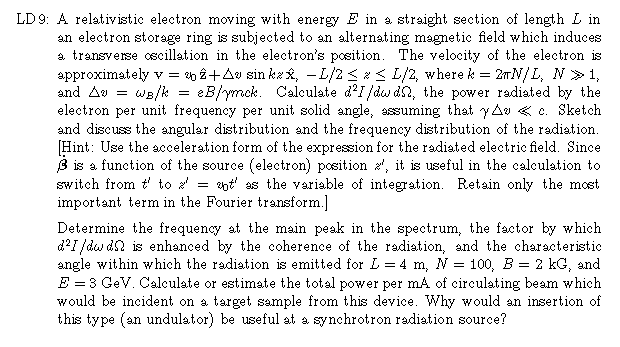 is
defined as the repetition frequency of the pulses of radiation seen by a
distant observer. This would appear as the fundamental frequency in a
Fourier decomposition of the periodic signal. Do not set
is
defined as the repetition frequency of the pulses of radiation seen by a
distant observer. This would appear as the fundamental frequency in a
Fourier decomposition of the periodic signal. Do not set
 in the calculation of
in the calculation of  , but keep the first
correction in powers of
, but keep the first
correction in powers of  to see what
happens.
to see what
happens.
14.26d, addition: Explain how one could show through observation that the high frequency component of the radiation from the Crab nebula is synchrotron radiation rather than thermal (black body) radiation. Give at least two tests.

 .
The Fourier integral
involves only a finite interval in t' or z', and the phase factor can be
simplified under the conditions given by dropping the term in
.
The Fourier integral
involves only a finite interval in t' or z', and the phase factor can be
simplified under the conditions given by dropping the term in